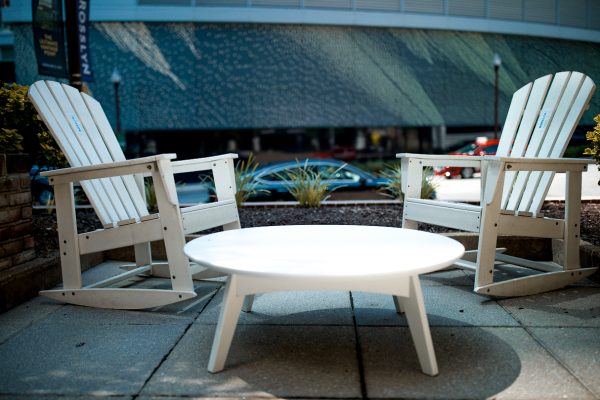Most of us want to be healthier – eat better, be more active, and have more energy daily. It’s not a lack of desire for change that has led to the United States’ shocking obesity rate (66% of adults). Rather, it’s a combination of lack of knowledge and frustration with the overwhelming online information. It’s almost impossible to open any news site without seeing headlines about the latest, greatest diet and fitness trends: Studies show a low-fat diet is the best way to lose weight on one site may be countered by Studies show that a low-carb, high-fat diet is the way to shed those pounds. South Beach diet! Cookie diet! Go Paleo! Gluten-free! Many promises of changes to your health – and weight – but how do you know who or what to trust?
Fortunately, there are many basic, common-sense steps you can take to improve your health, energy, and, if needed, weight.
Get Moving
Though the Department of Health and Human Services currently recommends that adults (18-64 years of age) get at least 150 minutes of moderate-intensity aerobic physical activity each week, as little as 5-10 minutes/day can decrease your risk of certain diseases and help you along the road to fitness. You can also break your exercise up into 10-minute intervals throughout the day if time is an issue.
What is “Moderate-Intensity” Exercise?
You don’t need to run 10 miles/day to see results. Moderate exercise includes, but is not limited to: biking at a slow pace (5-10mph), canoeing, ballroom dancing, gardening, walking briskly, water aerobics, etc.
Add in Muscle-Strengthening Activities
This not only increases your calorie burn but also improves bone density, increases your dexterity and flexibility, and lowers your risk for certain diseases like diabetes and heart disease. You don’t need an expensive gym, either—push-ups, squats, lifting objects found at home (water bottles, etc.)—you can do this in front of your favorite show!
Get Some Sleep
While everyone’s specific sleep needs differ, the National Sleep Foundation recommends that adults aim for 7-9 hours/night. Getting enough sleep helps increase concentration and memory skills, while sleep deprivation increases your risk for high blood pressure, heart disease, and stroke. Insufficient sleep has also been strongly linked to higher rates of depression and stress.
What Should I Eat?
While you will find proponents of all different diets, some basic rules will help you achieve that elusive balanced diet and, in doing so, feel better, look better, and have more energy. Your body will thank you!
Minimize, If Not Eliminate, Processed Foods
The SAD diet (Standard American Diet) relies heavily on processed foods rife with added chemicals and hard-to-pronounce ingredients. Try this: shop the perimeter of your grocery store, and if you can’t pronounce a food’s ingredients, keep it out of your cart. Better yet, focus only on foods that have NO label. Think whole fruits and vegetables, lean cuts of meat, seafood, low-fat dairy, and whole grains.
Avoid Extra Sugar
Too much refined sugar can wreak havoc on your health and energy levels, so be aware of how much you are consuming. Sugar sneaks into unlikely places, like store-bought pasta sauce, cereals, ketchup, and sandwich bread. So check for added sugars always, and keep the sweet treats to a minimum. Or, better yet, have some fresh, whole fruit instead!
Watch Portion Sizes
It is very easy to overeat – and overdo – your daily calories if you aren’t aware of portion sizes. Check out www.healthyeating.org for a guide, and always be wary of portions when eating at a restaurant. You are almost guaranteed to consume 2-3 (if not more) times the recommended portion size when eating out.
Check Your Hunger at the Door
This is not about fasting; it is about checking in with yourself before reaching for a candy bar or bag of chips at 2 pm. Are you really hungry or just thirsty? Or bored? While you must meet your daily calorie needs, you also want to minimize the additional snacking. Take a 10-minute walk, have a glass of water, and start on a new task – chances are, you’ll find the “hunger” passes. *To determine your daily calorie needs, there are many tools online, including the Mayo Clinic, Active.com, and Nutritiondata.self.com.
Make Getting Healthy Fun
Finally, you will be far more successful at making necessary lifestyle changes if you find ways to make it enjoyable. Find a physical activity you enjoy – if you hate running and make that your go-to exercise, you will give up. Engage a friend or family member – having an exercise partner will keep you accountable and keep things fun. Challenge others to eat healthily – keep an online record of your diet and exercise progress (ex., www.myfitnesspal.com) and challenge a friend to do the same. Take a cooking class – or look up new recipes to help make healthy food more enticing. Any time you enjoy what you are doing, you are much more likely to stick with it!




